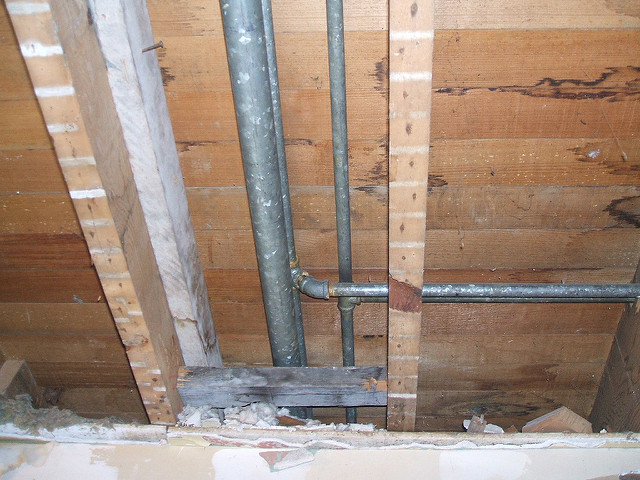They are making a few good points on Top leak detection hacks as a whole in this content down the page.

Early discovery of leaking water lines can mitigate a possible disaster. Some little water leaks may not be noticeable.
1. Analyze the Water Meter
Every residence has a water meter. Inspecting it is a proven way that aids you find leakages. For beginners, turn off all the water sources. Make certain nobody will certainly flush, utilize the tap, shower, run the washing maker or dishwasher. From there, go to the meter as well as watch if it will certainly transform. Because no person is using it, there must be no activities. That shows a fast-moving leak if it moves. Furthermore, if you spot no changes, wait a hr or more and also examine back again. This means you may have a sluggish leak that might even be below ground.
2. Check Water Consumption
If you detect abrupt adjustments, in spite of your usage being the exact same, it implies that you have leaks in your plumbing system. An abrupt spike in your costs shows a fast-moving leakage.
On the other hand, a consistent increase every month, despite having the very same routines, shows you have a slow leakage that's additionally slowly escalating. Call a plumber to completely check your property, specifically if you feel a warm location on your floor with piping below.
3. Do a Food Coloring Test
30% comes from toilets when it comes to water intake. Test to see if they are running properly. Decline specks of food shade in the tank and also wait 10 minutes. There's a leakage in between the storage tank and also bowl if the shade in some way infiltrates your bowl during that time without flushing.
4. Asses Outside Lines
Don't fail to remember to inspect your exterior water lines also. Should water seep out of the link, you have a loosened rubber gasket. One tiny leak can squander heaps of water and also increase your water costs.
5. Evaluate and also Analyze the Situation
Property owners must make it a routine to inspect under the sink counters as well as even inside cupboards for any type of bad odor or mold growth. These two red flags indicate a leakage so punctual focus is required. Doing routine inspections, even bi-annually, can conserve you from a significant issue.
If you understand your house is already old, keep a careful eye on your heating units, hose pipes, pipes and so on. Look for discolorations and damaging as the majority of pipelines as well as devices have a life span. They will additionally normally weaken due to tear as well as wear. Do not wait for it to intensify if you suspect dripping water lines in your plumbing system. Call an expert plumber immediately so you don't end up with a dreadful mess in your house.
Early discovery of dripping water lines can minimize a potential catastrophe. Some little water leaks might not be visible. Examining it is a surefire method that aids you find leakages. One tiny leakage can waste heaps of water and spike your water expense.
If you suspect leaking water lines in your plumbing system, do not wait for it to rise.
WARNING SIGNS OF WATER LEAKAGE BEHIND THE WALL
PERSISTENT MUSTY ODORS
As water slowly drips from a leaky pipe inside the wall, flooring and sheetrock stay damp and develop an odor similar to wet cardboard. It generates a musty smell that can help you find hidden leaks.
MOLD IN UNUSUAL AREAS
Mold usually grows in wet areas like kitchens, baths and laundry rooms. If you spot the stuff on walls or baseboards in other rooms of the house, it’s a good indicator of undetected water leaks.
STAINS THAT GROW
When mold thrives around a leaky pipe, it sometimes takes hold on the inside surface of the affected wall. A growing stain on otherwise clean sheetrock is often your sign of a hidden plumbing problem.
PEELING OR BUBBLING WALLPAPER / PAINT
This clue is easy to miss in rooms that don’t get much use. When you see wallpaper separating along seams or paint bubbling or flaking off the wall, blame sheetrock that stays wet because of an undetected leak.
BUCKLED CEILINGS AND STAINED FLOORS
If ceilings or floors in bathrooms, kitchens or laundry areas develop structural problems, don’t rule out constant damp inside the walls. Wet sheetrock can affect adjacent framing, flooring and ceilings.
https://www.servicemasterbyzaba.com/blog/how-to-detect-water-leakage-in-walls/

Do you really like reading about Hacks to detect leaks? Put feedback further down. We'd be pleased to see your thoughts about this page. Hoping that you come back again before long. Liked our blog posting? Please share it. Help others find it. Thank you for going through it.